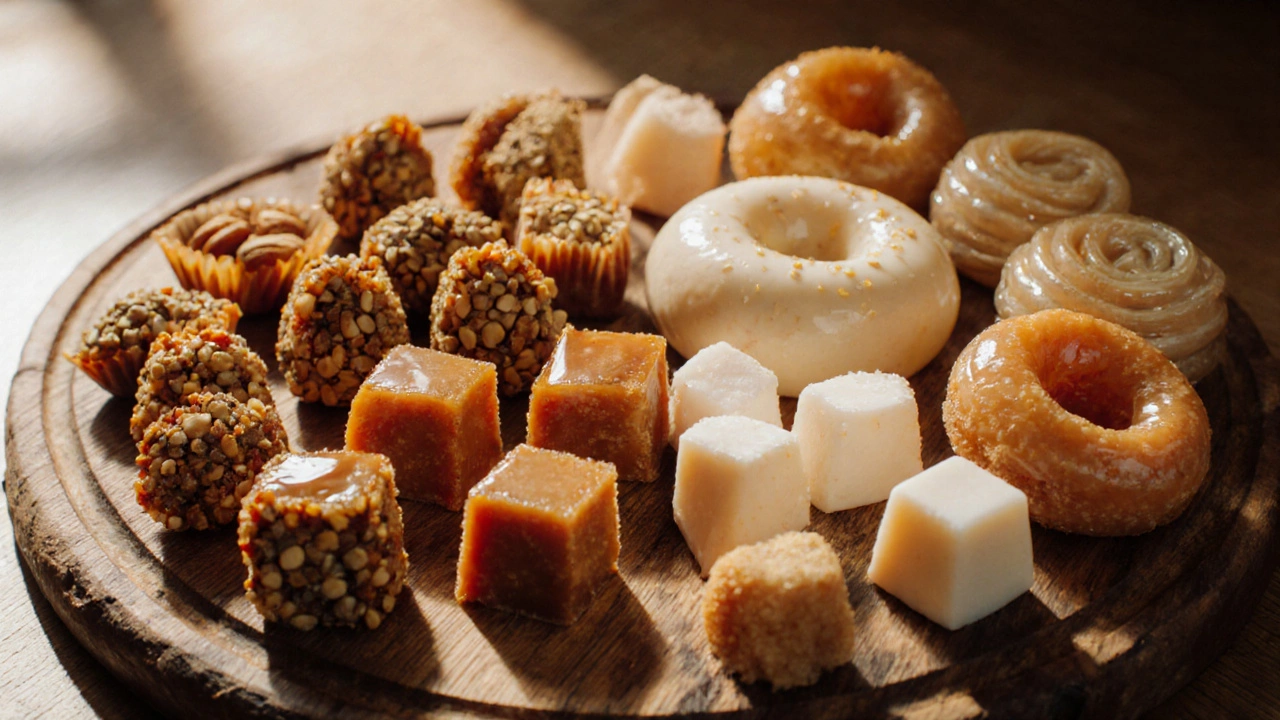
Vegan Indian Mithai Guide: Which Sweets Are Plant‑Based?
Discover which Indian mithai are truly vegan, how to spot hidden animal ingredients, and easy DIY swaps to enjoy classic sweets without dairy.
When working with vegan Indian desserts, traditional Indian sweets that avoid any animal products, using plant‑based milk, flours, and natural sweeteners. Also known as dairy‑free Indian sweets, it blends age‑old spices with modern vegan ingredients to give you tasty, guilt‑free treats.
Every good vegan Indian dessert starts with a few pantry heroes. coconut milk adds richness to puddings and frozen delights, while chickpea flour provides structure for fried sweets and batter‑based recipes. For sweetness that feels authentic, many cooks turn to jaggery, a raw sugar with caramel notes that pairs perfectly with spices like cardamom and saffron. Together these ingredients let you recreate classics without a single drop of dairy.
Take the beloved gulab jamun, for example. The traditional version uses milk solids, but a vegan spin swaps the milk with a chickpea‑flour‑based dough, then soaks the fried balls in a syrup made from jaggery, rose water, and a pinch of cardamom. The result is a soft, fragrant bite that tastes just as indulgent as the original. Another crowd‑pleaser is kulfi, the Indian ice cream. Blend coconut milk with toasted pistachios, a touch of saffron, and a sweetener of your choice, then freeze with agar‑agar for a firm texture. The creamy mouthfeel comes from the natural fat in coconut milk, so you don’t miss the cream at all.
When you’re ready to experiment, think about the technique behind the texture. Aquafaba – the liquid from canned chickpeas – works wonders as an egg‑white replacer for meringues and light batters. For gummy or set desserts, agar‑agar or pectin can substitute gelatin, giving you clean cuts and a glossy finish. These tools let you control firmness, whether you’re making a jam‑filled barfi or a soft, melt‑in‑your‑mouth halwa.
Spices are the soul of Indian sweets, and they stay the same in vegan versions. Cardamom adds a citrus‑bright note that lifts the heaviness of coconut milk. Saffron threads, steeped briefly in warm milk, give a golden hue and subtle floral aroma. Rose water or kewra (screw pine) provide that signature perfume you associate with festive treats. Using these flavors strategically creates depth without relying on butter or ghee.
The sub‑regional variety is huge. South Indian desserts often lean on coconut, so think of coconut‑laden payasam or ada, a rice‑flour roll soaked in spiced coconut milk. In the north, nuts and dried fruits dominate, leading to pistachio‑laden laddus or almond‑infused peda. By swapping dairy with plant‑based equivalents, you can travel across India on a sweet map while staying completely vegan.
Beyond taste, these desserts bring health perks. Coconut milk offers medium‑chain triglycerides that are easier to digest, chickpea flour adds protein and fiber, and jaggery retains trace minerals missing from refined sugar. Swapping out heavy ghee means lower saturated fat, making the sweets kinder to the heart. With a handful of simple steps – choose the right plant milk, pick a natural sweetener, and respect the spice balance – you’ll have a repertoire of vegan Indian desserts that impress guests and satisfy cravings.
Below you’ll find a curated set of articles that dive deeper into each recipe, ingredient swap, and technique, giving you everything you need to start baking these plant‑based delights today.

Discover which Indian mithai are truly vegan, how to spot hidden animal ingredients, and easy DIY swaps to enjoy classic sweets without dairy.